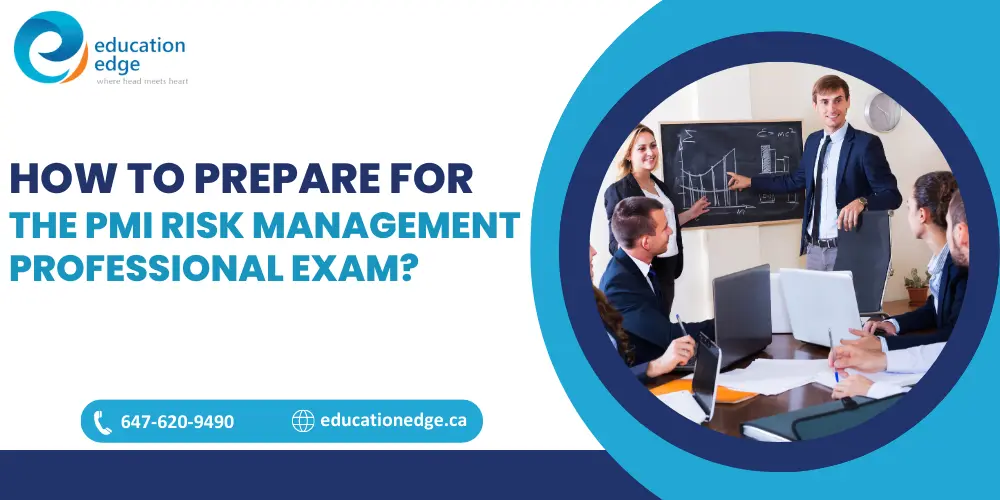Want to crack the PMI Risk Management Professional Exam? Then, here you will get all the things that you need to know. READ ON!

The PMI-RMP certification exam is designed to assess your understanding and expertise of risk management principles, methods, and strategies. It assists project managers in identifying and evaluating project risk . While anyone thought of taking the PMI-RMP exam, the first thing that comes to mind is How to prepare for The PMI Risk Management Professional Exam. Well.. We have bought you an effective strategy for preparing for the PMI-RMP exam.
Make sure to check: Which Business Analyst Certification is Right for You?
About PMI-RMP Certification Exam
The PMI-RMP (Project Management Institute – Risk Management Professional) Certification Exam is developed for people who want to demonstrate their knowledge of recognizing and assessing project risks. The dictionary of major terminology you may encounter while studying for the PMI-RMP certification test is as follows:
- Risk: An unpredictable event or situation that can have a favorable or negative impact on project objectives.
- Risk management: It is the process of finding, assessing, and responding to project hazards.
- Risk identification: It is the process of detecting potential dangers to a project.
- Risk assessment: It is the process of determining the possibility and impact of recognized risks.
- Risk response: The activities made to address recognized hazards.
- Risk mitigation: It is the process of lowering the chance or impact of identified risks.
- Risk register: A record containing all recognized project risks and their risk responses.
- Risk appetite: The amount of risk that a company is ready to absorb.
- Risk tolerance: It is the amount of uncertainty that an organization is ready to accept in order to achieve its goals.
- Risk acceptance: It is the process of recognizing a risk and deciding not to take action.
- Risk monitoring and control: The process of tracking recognized hazards and implementing risk response plans as appropriate.
- Contingency plan: A contingency plan is a strategy that describes the steps to be performed if a risk event occurs.
- Risk threshold: The point at which a risk becomes unacceptable and necessitates quick action.
- Risk communication: It is the practice of sharing risk information with stakeholders in order to ensure that they are aware of potential hazards and their impact on the project.
- Risk avoidance: This is the process of removing a risk from a project strategy or method.
- Risk transfer: It refers to the process of transferring risk to another party, such as an insurance company.
- Risk probability: The likelihood of a risk event occurring.
- Risk categorization: It is the process of categorizing risks in order to help risk management.
- Risk impact: The influence of a risk event on project objectives.
- Risk analysis: The process of determining the potential impact of identified hazards on the project.
PMI-RMP Certification Exam Preparation Strategy
Here are the PMI Risk Management Professional Exam Preparation Strategies:
- First, Create a study plan for the PMI risk management professional exam that includes when, where, and what you will study.
- Secondly, treat your exam preparation like a project, with a three-month deadline for the PMP exam.
- Furthermore, completely read the PMBOK Guide at least twice and make important notes.
- Fourthly, go over the PMP Exam Outline.
- Following that, identify the numerous sources to study and prepare for based on the PMBOK guide but more informative.
- Also, choose a study media that is appropriate for your needs (hard copy, e-book, online course, exam simulation, etc.).
- After that, you can organize study groups or join a PMI chapter to network with other PMP exam aspirants.
- Then, revise and revisit the places where greater clarification is necessary.
- Furthermore, audit your progress by completing mock tests; you should strive for an 80% or higher result.
- Next, carefully review your answers in order to benefit from your corrections and keep a high score in the final exam.
- You must also schedule the exam ahead of time so that your goal is determined and your efforts are directed accordingly.
- Next, you must write the exam only when you are certain, and not merely to get it over with.
- Then, to prevent wasting time and effort, develop a strategy based on your skills and weaknesses for attempting the various types of questions.
- Furthermore, ITTO-related questions must be handled as real-world project scenarios, with the pieces required to deliver the desired information, output, or outcome identified.
- Finally, when answering the questions, go over them thoroughly and avoid second-guessing yourself.
You may also check: CBAP Certification: Is It Essential for Business Analysts?
Frequently Asked Questions
1. How challenging is the PMI-RMP examination?
The certification exam consists of 115 multiple-choice questions and takes 2.5 hours to complete. The exam, like all PMI examinations, is challenging.
2. How many questions are there on the PMI-RMP exam?
The PMI-RMP has 115 multiple choice questions.
3. Is the PMI-RMP certification useful?
PMI-RMP helps project managers in identifying and evaluating risks. It provides a method for mitigating and managing risks in order to maximize company results and accomplish desired goals.







